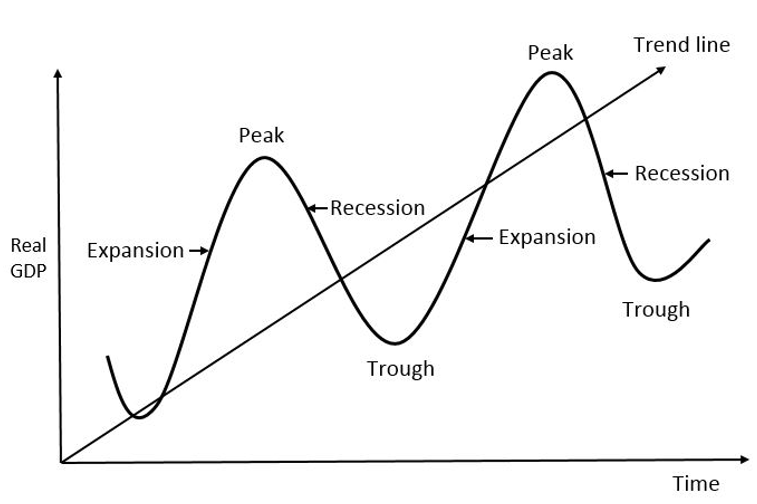Recession
View FREE Lessons!
Definition of a Recession:
A
recession is a period of economic contraction when an economy's real gross domestic product decreases for two successive quarters.
Detailed Explanation:
Economic activity expands and contracts over time. Usually, a country’s economy grows. Output measured in the real gross domestic product (RGDP) increases. However, it is normal for economies to experience periods when economic output decreases. These periods of economic contractions are called recessions. Recessions are marked by declining sales, lower profits, and more business failures. Businesses cut production and lay off employees. Some of the laid-off workers may accept jobs that are ill-suited for their skill level, or they may work fewer hours than they would like. The severest of recessions are depressions.
A recession eventually ends when the economy begins to grow again. RGDP increases during an expansion. Business sales and production increase. People are hired and capital is invested to meet the added demand. Economists refer to the cycle of an economy's expansions and recessions as a business cycle. The turning points in business cycles are the troughs, where a recession ends and an expansion begins, and the peaks, where an expansion ends and a recession begins.

The United States’ economy has had 33 recessions since 1857, according to the National Bureau of Economic Research, the agency that determines whether the US economy has entered a recession. Follow the link to the
National Bureau of Economic Research website to learn the beginning and end of all the US business cycles since 1857.
During recessions governments usually apply fiscal and monetary policies to stimulate the economy by a combination of increasing government spending, reducing taxes, and increasing the money supply.
Dig Deeper With These Free Lessons:
Business Cycles
Causes of Inflation
Fiscal Policy – Managing an Economy by Taxing and SpendingFractional Reserve Banking and the Creation of Money
Monetary Policy – The Power of an Interest Rate
The Federal Budget and Managing the National Debt
